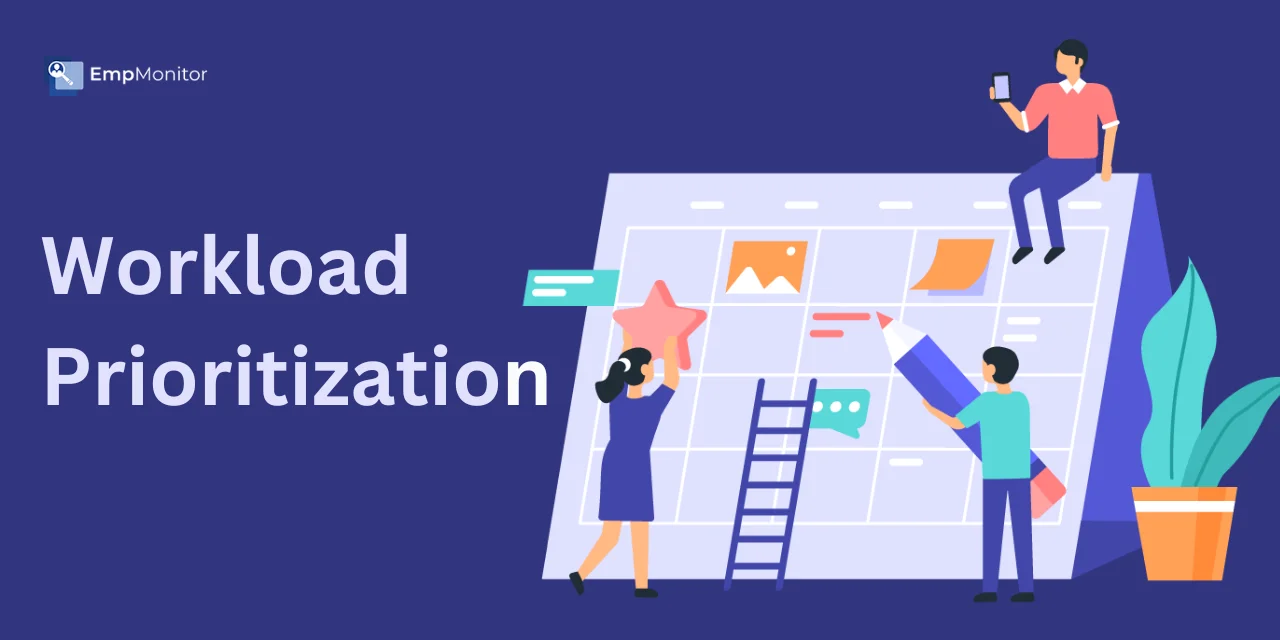If your team is consistently working extended hours in an attempt to manage their assigned tasks, it’s possible that you are facing challenges in managing their workload effectively.
While occasional overtime might be necessary to address unexpected spikes in workload, prolonged reliance on excessive hours can be counterproductive. It can lead to several negative consequences, including:
- Diminished productivity and cognitive sharpness.
- Adverse effects on project outcomes and employee satisfaction.
- Increased likelihood of burnout and higher staff turnover rates.
If you are struggling to reduce team task lists to a manageable size or frequently find yourself grappling with 80-hour workweeks, it’s crucial to prioritize the enhancement of your team workload management practices.
So, this comprehensive guide provides everything you need to understand workload prioritization and offers practical insights on- how to implement these principles to the advantage of your business and its workforce.
Listen To The Podcast Now!
Why Workload Prioritization Is Important?
Workload prioritization is a cornerstone of effective time and task management, carrying profound significance for personal and professional success.
By sorting tasks based on their importance and urgency, you can ensure that you allocate your limited resources—time, energy, and attention—where they matter most. Prioritization minimizes stress, prevents burnout, and enhances productivity. It empowers you to meet deadlines, accomplish critical goals, and efficiently use work hours.
Also, helps to balance a healthy work-life balance. Ultimately, workload prioritization is the compass that guides your career, helping you navigate challenges, seize opportunities, and achieve your aspirations with greater ease and efficiency.
What Causes Workload Challenges?
Workload prioritization challenges can be pervasive in both professional and personal life. Understanding the underlying causes is crucial to address and overcome them effectively.
Overcommitment:
Accepting too many responsibilities or projects without considering their demands can lead to an overloaded workload.
It’s essential to navigate workload balance between enthusiasm and realistic expectations to ensure that your commitments align with the resources and time available, preventing burnout and maintaining productivity.
Unforeseen Events:
Life’s unpredictability can bring about unexpected events that disrupt your planned workload, causing stress and a need for quick adjustments. These events may include family emergencies, urgent last-minute tasks, or sudden changes in project requirements. Being prepared to adapt to such situations and having contingency plans in place can help manage the impact of unforeseen events on your workload.
Lack of Prioritization:
Failing to prioritize tasks effectively can lead to a scattered approach to work, with less vital activities taking precedence over high-impact ones. It not only hampers progress but also decreases overall productivity. Developing a system for task prioritization, focusing on what matters most, can help streamline your workload.
Inadequate Resources:
When you lack essential resources, whether it’s time, tools, or personnel, completing tasks becomes a challenge. It can result in a heavier workload prioritization as you struggle to compensate for these deficiencies. It’s crucial to identify resource gaps and address them to ensure that you have what you need to perform your tasks effectively.
Perfectionism:
Striving for perfection in every task can be time-consuming and emotionally draining. This perfectionist tendency can lead to an overwhelming workload prioritization as you invest excessive time and energy into making every detail flawless. Recognizing when “good enough” suffices and being more efficient in your work can alleviate this burden.
Ineffective Communication:
Poor communication can introduce a host of problems in the workplace. Misunderstandings, delays, or mismanagement of tasks can occur due to inadequate or unclear communication. These issues can compound your workload prioritization as you spend additional time correcting mistakes or clarifying instructions. Effective communication is to reduce the added burden.
Scope Creep:
In many work environments, project scopes can gradually expand beyond the original plan. This expansion can significantly increase your workload prioritization, especially if there’s no corresponding adjustment to complete the extended tasks. It’s essential to monitor project scope and advocate for necessary adjustments to maintain a manageable workload.
Inadequate Delegation:
Failing to delegate tasks when appropriate can lead to a personal backlog and an unnecessary increase in your workload. Trusting your team and colleagues to handle responsibilities is vital for distributing the work effectively. Delegation not only lightens your load but also promotes team collaboration and growth.
Uneven Workload Distribution
Uneven workload distribution is a common issue in many workplaces, and it can lead to various problems. When some team members bear a disproportionate share of the work, it can result in burnout, lowered morale, and decreased overall productivity.
Organizations must implement fair workload distribution practices, ensuring that tasks and responsibilities are equitably assigned among team members to maintain a harmonious and efficient work environment.
11 Best Practices To Prioritize Your Tasks
Effective workload prioritization is essential for achieving success in any professional setting. When you prioritize your tasks efficiently, you can manage your time, energy, and resources more effectively, leading to increased productivity and reduced stress.
To help you make the most of your workday, here are nine best practices for prioritizing your workload:
Set Clear Goals: To enhance your productivity, start by establishing clear, measurable goals for your day, week, or month. These goals act as a roadmap, guiding your tasks and providing a sense of purpose. They help you prioritize, stay focused, and understand the significance of each task, ultimately leading to more efficient workload prioritization.
There are various prioritization methods available like MOSCOW prioritization and others that can be used.
One Thing at a Time: Multitasking, once seen as a productivity booster, is now recognized as a hindrance. When you juggle multiple tasks simultaneously, your brain divides its focus, reducing efficiency.
Avoid multitasking to stay on track and deliver better results. Concentrate on one task at a time, and you’ll find that your work is not only more accurate but also completed more quickly. Your career will thank you for it.
Record task time: Recording task times is a smart way to boost your workload prioritization. By tracking how much time each task consumes, you gain valuable insights into your productivity.
This data helps you identify where your efforts are best spent, allowing you to prioritize tasks with precision. Make time management a habit, and watch your career progress flourish as you invest your time wisely in high-impact activities.
Consider Deadlines: When deciding how to prioritize your tasks, always keep an eye on deadlines. Tasks with imminent deadlines should naturally take precedence, ensuring that you meet your commitments and avoid unnecessary stress.
Delegate When Possible: Identifying tasks that can be effectively delegated to others without compromising quality is a valuable skill. Delegating such responsibilities not only lightens your workload but also fosters teamwork and allows you to focus on more critical aspects of your work.
Also Read:
How To Build An Effective Workload Management System For Your Organization?
Best Strategies To Implement Team Workload Management
Why Do We Need Workforce Management Solutions To Grow?
Eliminate Time-Wasting Activities: Identify and eliminate activities that don’t contribute to your goals or the organization’s success. It includes excessive time spent on social media, unnecessary meetings, or unproductive habits.
Regularly Review and Adjust: Your priorities may change as new tasks and information become available. Also, regularly review the work to stay aligned with your goals and the changing demands of your work.
Embrace Flexible: While you may have a carefully prioritized task list, it’s crucial to acknowledge that circumstances can shift unexpectedly, disrupting your meticulously laid-out plans. Changing priorities can introduce additional tasks, potentially intensifying the pressure to meet altered deadlines.
Use Workload Management Tools: Utilize effective workload management software or tools to prioritize tasks like Empmonitor to help you organize and prioritize your tasks efficiently. These tools provide representations of your workload prioritization and enable easy adjustments as needed.
EmpMonitor is a comprehensive employee monitoring and productivity management tool to prioritize tasks and aid organizations in managing their workload efficiently. This tool offers features designed to enhance productivity, streamline work processes, and ensure that teams are performing at their best.
Let’s explore how EmpMonitor can be a valuable asset for organizations in workload prioritization and the key features it offers:
Time Tracking: Monitors employee work hours to identify time allocation.
Productivity Analysis: Provides insights into employee productivity through detailed reports on app and website usage.
Task Management: Enables task assignments, deadlines, and progress monitoring.
Remote Work Monitoring: Ideal for remote work, ensures workforce management expectations are met.
Screen Recording: Records employee screen activities for training and quality control.
Employee Insights: Generates individual performance reports for tailored support.
Data Security: Prioritizes secure, ethical data handling.
User-Friendly Interface: Navigable dashboards for both employers and employees.
Customization: Adaptable to industry-specific needs.
Real-time Monitoring: Tracks employee activities as they occur, aiding prompt response to workload issues and productivity concerns.
Final Thought:
Effective workload prioritization is the key to achieving more with less. It not only improves individual productivity but also fosters a healthier work-life balance for your team. As a result, your organization can experience enhanced project outcomes, reduced staff turnover, and sustained growth.
When you prioritize workload effectively, you pave the way for your team to thrive, excel, and take your organization to new heights. So, take a step back, evaluate your workload, and start prioritizing progress today.














